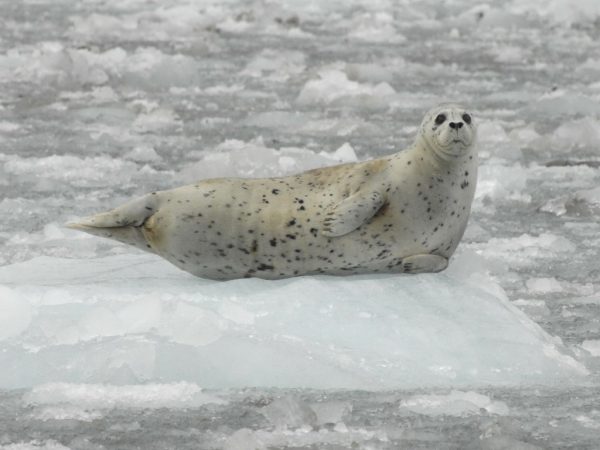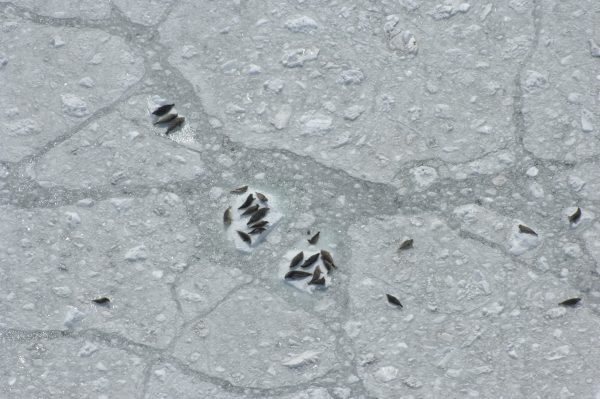Project tests method for monitoring ice conditions
November 16, 2016
Sue Mitchell
907-474-5823

Along Alaska's southern coast, harbor seals use icebergs from tidewater glaciers as platforms to give birth, nurse, molt and avoid predators. As these glaciers melt and thin, some may retreat onto land and no longer calve into the ocean.
Researchers from the University of Alaska Fairbanks Geophysical Institute and the National Park Service have successfully tested a method to measure how much floating ice exists and how it is changing. Their work may help scientists and policymakers better understand how changing ice conditions affect the harbor seals.
For eight years, NPS employees collected aerial photos of seals and ice in Johns Hopkins Inlet, a fjord in Glacier Bay National Park and Preserve. To develop a way to process the information in the photos, the park employees worked with scientists at the University of Alaska Fairbanks' Geophysical Institute under a Cooperative Ecosystems Studies Unit grant.
“This is the first study to develop a semiautomated method that can be used to systematically quantify glacier ice habitat in tidewater glacier fjords from aerial photographic imagery," said Jamie Womble, a wildlife biologist with Glacier Bay National Park and Preserve.
As we view an image, our eyes register colors and shapes, the location of an object and its relationship to others in its immediate neighborhood. We use all this information to decide what type of object it is. New generations of sensors record images at a resolution fine enough to allow computers to do the same thing — recognize and categorize objects based on defined variables.

The method was able to successfully classify water, icebergs and floating bits called brash ice. It will be important for quantifying seasonal and annual changes in the icebergs in tidewater glacier fjords. The technique could also be used to analyze images taken by unmanned aircraft or of sea ice, which is habitat for other species of seals as well as polar bears.
“This study is an example of a great interdisciplinary collaboration between marine ecologists, glaciologists and remote sensing scientists from the UAF Geophysical Institute and the National Park Service,” Womble said.
The work, by Womble and the Geophysical Institute’s Robert McNabb, Anupma Prakash, Rudiger Gens and Christian Haselwimmer, was supported by Glacier Bay National Park and Preserve. It was published in the peer-reviewed journal PLOS ONE on Nov. 9.
ADDITIONAL CONTACTS: Anupma Prakash, 907-474-1897, aprakash@alaska.edu; Jamie Womble, 907-364-1577, jamie_womble@nps.gov
ON THE WEB: http://dx.doi.org/10.1371/journal.pone.0164444
http://www.harborseals.alaska.edu/background.html


